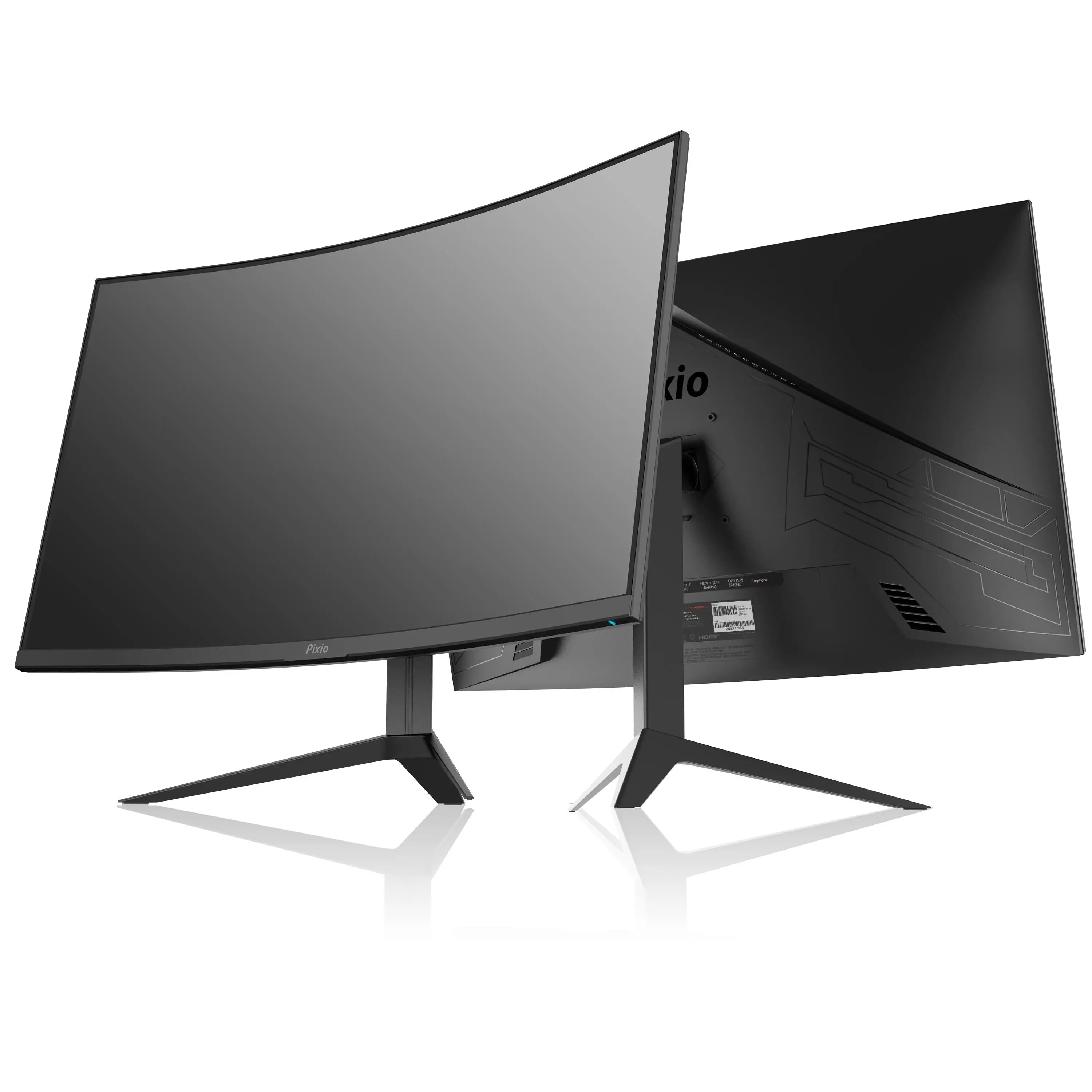
Today we will look at the monitor PXC279 from Pixio from the year 2021. Within this article, we will first take a closer look at the most important feature of a monitor -the display-, then the design, and in the next section we will go into the features of the monitor. Of course, power consumption, certifications, connectivity and other important details will also be considered.
Display
27 inches ( 68.5 cm on the diagonal) offer sufficient space for texts in any office applications, for example. While classic CRT monitors were built with a screen ratio of 4:3, this monitor has a ratio of 1.778 : 1 (width to height). The display is a VA panel. The panel has a resolution of 1920 x 1080 px. The pixel density is 81 ppi. The pixel pitch is 0.311 mm. The monitor's panel reaches a peak brightness of 400 nt. The panel is illuminated by W-LED. The built-in panel ensures stable color reproduction of the image, even at deviating viewing angles, by means of its 178 ° (horizontal) viewing angle. Pixio promises stable color reproduction moreover within a 178 ° vertical angle. Vertically, however, the image renews at a minimum rate of 48 hz up to 240 hz. The display panel is Anti-glare/Matte.
Color representation
The panel has a bit depth of 8 per color channel, but what does that mean? The number of bits determines how many colors can be encoded for the individual pixels of the display. For an 8-bit panel, for example, this is 256 different colors (2^8 = 256). However, since we usually display three different colors per pixel at the same time, in theory about 16 million (256^3) different colors are possible by mixing the three pixels. A 10-bit panel could even display a billion colors. According to the manufacturer, the coverage of the DCI-P3 color space is 95.48 %.
Contrast ratio
Contrast ratio is a common measurement used to represent the maximum relative differences in brightness between black and white. It describes the ability of a screen or projector to produce a high-contrast image and is the quotient of the maximum and minimum displayable luminance. The higher the values are away from each other, the stronger the quantitatively seen difference between black and white is set up, which in turn results in an improved image quality. This monitor from Pixio has a static contrast ratio of 4000 : 1 , according to the manufacturer.
HDR
The monitor supports all HDR modes listed here:
- HDR
screen design
The size of the monitor (stand included) is 46.2 x 61.1 x 25.1 cm (HxWxD). The base itself has a depth of 25.1 cm. The device weighs 6.9 kg with the stand in place.
Curved
The PXC279 is a curved monitor with a curvature of 1.5 m
Rotate, tilt and swivel
The monitor from Pixio cannot be rotated. The monitor cannot be swiveled. This feature could be retrofitted with a third-party stand. It is possible to adjust the tilt angle of the monitor PXC279 according to personal preference to ensure ergonomic and comfortable viewing.
camera
This monitor does not have a camera.
Features
- Flicker Free: Pixio 's Flicker Free technology minimizes distracting screen flicker, allowing you to work and/or play longer without restrictions.
- AMD FreeSync Premium: By dynamically synchronizing the refresh rate of the PXC279 with frame rate, AMD FreeSync Premium minimizes judder and ensures smooth and enjoyable gaming. In addition, AMD FreeSync Premium guarantees that the monitor operates at a minimum of 120Hz at FHD and low framerate compensation (LFC) is available.
- Nvidia G-SYNC
Anyone who works a lot on the computer spends many hours a day in front of the screen. Excessive screen work can damage the eyes. This effect can be particularly pronounced during the darker hours and in the winter months. Many monitor manufacturers have now reacted and offer technologies and settings to reduce the blue component, which is primarily controversial. Depending on the manufacturer, these can be called "Low Blue Light", "Low Blue Light Technology", "SoftBlue" or even "Eye Saver Mode" and function differently. However, it is only important that Pixio offers a technology to reduce the blue content in its monitor PXC279.
Power consumption
The maximum power consumption (peak) specified for this monitor is 36 w. In standby mode, the device consumes approximately 0.5 w. The monitor can be operated on a 110v power supply. The monitor can be operated on a 220v power supply.
Further information
- 100x100

